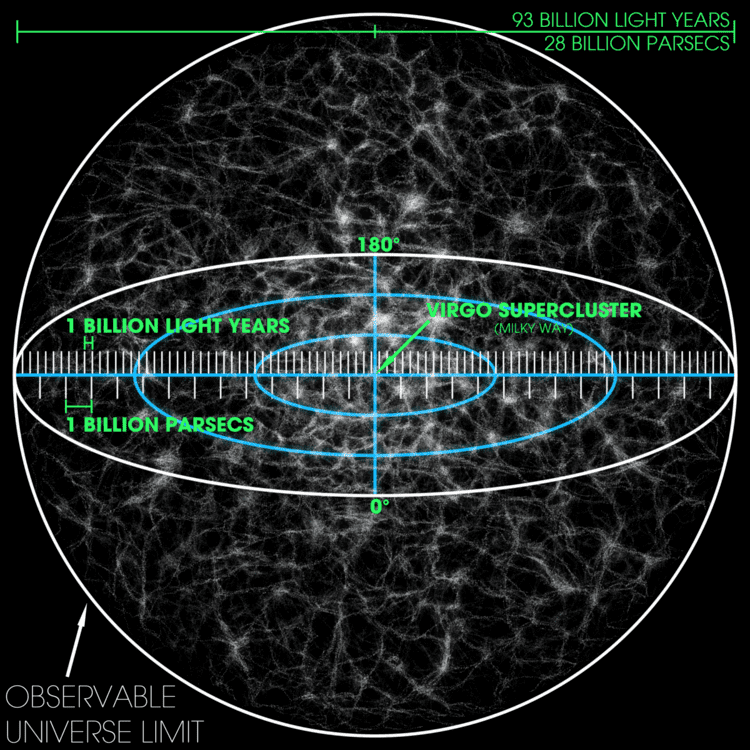 | ||
In cosmology, a Hubble volume, or Hubble sphere, is a spherical region of the Universe surrounding an observer beyond which objects recede from that observer at a rate greater than the speed of light due to the expansion of the Universe. The Hubble volume is approximately 1031 cubic light years.
Contents
The proper radius of a Hubble sphere (known as the Hubble radius or the Hubble length) is
More generally, the term "Hubble volume" can be applied to any region of space with a volume of order
Relationship to age of the universe
The Hubble length
Hubble limit as an event horizon
Objects at the Hubble limit have an average proper speed of c relative to an observer on the Earth so that, in a universe with constant Hubble parameter, light emitted at the present time by objects outside the Hubble limit would never be seen by an observer on Earth. That is, the Hubble limit would coincide with a cosmological event horizon (a boundary separating events visible at some time and those that are never visible). See Hubble horizon for more details.
However, the Hubble parameter is not constant in various cosmological models so that the Hubble limit does not, in general, coincide with a cosmological event horizon. For example in a decelerating Friedmann universe the Hubble sphere expands faster than the Universe and its boundary overtakes light emitted by receding galaxies so that light emitted at earlier times by objects outside the Hubble sphere still may eventually arrive inside the sphere and be seen by us. Conversely, in an accelerating universe, the Hubble sphere expands more slowly than the Universe, and bodies move out of the Hubble sphere.
Observations indicate that the universe is accelerating, so that some objects that we can currently exchange signals with will one day cross our Hubble limit.
